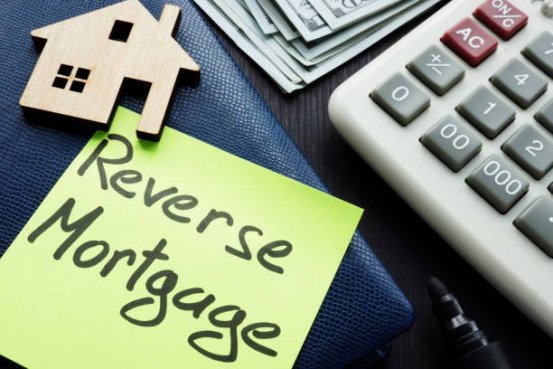What To Do If Your Flight is Cancelled or Delayed? Manage Things Wisely
Top 7 Pet-Friendly Hotels in the USA: Perfect Stays for You and Your Furry Friends
7 Best Vegetables to Overwinter in Your Garden
Top Rated Best Air Fryers of 2024: Expert Reviews
Brainwaves: Is The Subconscious Mind Receptive Under Lambda Waves?
What Is The Spoon Theory? How Many Spoons Do You Have?
The Truth About Reverse Mortgages: What You Need to Know Before You Borrow
Reverse mortgages provide a way for older homeowners to access the equity in their homes without selling or relocating. It is important to understand the benefits and risks involved before making this decision.
Reverse mortgages provide a way for older homeowners to access the equity in their homes without selling or relocating. It is important to understand the benefits and risks involved before making this decision.

What Is a Reverse Mortgage?
A reverse mortgage allows homeowners aged 62 and older to convert some of their home equity into cash without needing to sell their property. Unlike a traditional mortgage, borrowers are not required to make monthly payments. The loan is repaid when the homeowner sells the house, permanently moves out, or passes away. Many retirees use this option to supplement their retirement income, but it comes with significant costs and risks that must be carefully considered.
How Reverse Mortgages Work
Reverse mortgages convert a portion of your home’s equity into a loan, which can be paid out as a lump sum, monthly payments, or a line of credit. These funds are tax-free, and repayment is deferred until the home is sold or vacated. The loan amount depends on several factors such as the home’s value, the borrower’s age, and current interest rates. In the U.S., the Home Equity Conversion Mortgage (HECM) program, insured by the Federal Housing Administration (FHA), is the most common reverse mortgage product.
Types of Reverse Mortgages
The main reverse mortgage programs in the U.S. include:
-
Home Equity Conversion Mortgage (HECM): A government-backed program widely used by seniors.
-
Proprietary Reverse Mortgages: Private loans designed for homeowners with higher-value properties.
Borrowers can receive funds in one of the following ways:
-
Lump Sum: A single, upfront payment.
-
Monthly Payments: Regular payments for a fixed period or as long as the homeowner lives in the house.
-
Line of Credit: A flexible account from which money can be drawn as needed.
Pros and Cons of Reverse Mortgages
Reverse mortgages offer benefits but also come with drawbacks that should be weighed carefully.
Pros:
-
No Monthly Payments: Borrowers do not need to make monthly payments. The loan is repaid when the home is sold, the borrower moves to care, or passes away.
-
Access to Cash: Seniors can unlock equity without selling their home, providing additional income in retirement.
-
Tax-Free Income: Funds from a reverse mortgage are not taxable, making it a tax-efficient option.
-
Flexible Payment Options: Borrowers can choose between lump sums, monthly payments, or lines of credit based on their needs.
Cons:
-
High Fees and Interest Rates: Reverse mortgages generally have higher fees and interest rates compared to traditional loans.
-
Decreasing Home Equity: The loan balance grows over time with accruing interest, which reduces the equity and can affect the inheritance left to heirs.
-
Impact on Inheritance: If the loan balance exceeds the home’s value at repayment, heirs may inherit little or nothing.
-
Eligibility Requirements: Borrowers must be at least 62 years old, and the home must meet lender criteria.
Fees Associated with Reverse Mortgages
Fees often include:
-
Origination Fees: Charged by lenders for processing the loan application, which can range from hundreds to thousands of dollars.
-
Interest Rates: Usually higher than conventional mortgages due to the absence of monthly repayments and growing loan balance.
-
Insurance Fees: Some reverse mortgages include insurance to protect lenders if the loan balance exceeds the home’s value.
-
Closing Costs: Similar to traditional mortgages, including appraisal, legal fees, and title insurance.
How Much Can You Borrow?
The amount available depends on:
-
The home’s appraised value.
-
The borrower’s age — older borrowers typically qualify for higher amounts.
-
Current interest rates — higher rates reduce borrowing capacity.
-
Existing home equity.
Typically, homeowners can borrow between 30% and 55% of their home’s value.
Common Problems with Reverse Mortgages
Potential issues include:
-
Increasing Debt: With no monthly payments, interest accumulates, increasing the loan balance and decreasing equity.
-
Impact on Government Benefits: The proceeds may affect eligibility for programs such as Medicaid or Supplemental Security Income (SSI).
-
Risk of Foreclosure: Failure to meet loan terms, including paying property taxes and maintaining insurance, can lead to foreclosure.
Alternatives to Reverse Mortgages
Before committing, consider:
-
Home Equity Line of Credit (HELOC): Suitable for those under age limits with steady income, offering lower interest and flexible repayment.
-
Selling Your Home: Downsizing or selling could provide cash without reverse mortgage complexities.
-
Government Assistance: Seniors might qualify for federal or state benefits like SSI or Medicaid.
Frequently Asked Questions
Q: Can I lose my home with a reverse mortgage?
A: Yes, if you fail to pay taxes, insurance, or maintain the home, foreclosure is possible.
Q: Is a reverse mortgage taxable?
A: No, the loan proceeds are not considered taxable income.
Q: How do I know if a reverse mortgage is right for me?
A: Consult a financial advisor to review your personal circumstances and long-term goals.











